Can Microscopes See Molecules ?
Yes, microscopes can see molecules. However, the type of microscope used to visualize molecules is different from the traditional light microscope. Techniques such as electron microscopy, scanning tunneling microscopy, and atomic force microscopy are commonly employed to observe molecules at the atomic and molecular scale. These advanced microscopes use beams of electrons or probes to interact with the molecules, allowing scientists to obtain high-resolution images and gather information about their structure and properties.
1、 Resolution of Microscopes
Yes, microscopes can see molecules. The ability of a microscope to visualize molecules is determined by its resolution, which refers to the smallest distance between two points that can still be distinguished as separate entities. Traditional light microscopes have a limited resolution due to the diffraction of light, which prevents them from directly visualizing individual molecules. However, advancements in microscopy techniques have led to the development of high-resolution microscopes that can overcome this limitation.
One such technique is electron microscopy, which uses a beam of electrons instead of light. Electron microscopes have much higher resolution than light microscopes and can visualize individual molecules. Transmission electron microscopy (TEM) and scanning electron microscopy (SEM) are two common types of electron microscopy that have been used to study the structure and behavior of molecules.
In recent years, there have been significant advancements in super-resolution microscopy techniques. These techniques utilize fluorescent molecules that can be switched on and off, allowing for the precise localization of individual molecules. Examples of super-resolution microscopy techniques include stimulated emission depletion (STED) microscopy, structured illumination microscopy (SIM), and single-molecule localization microscopy (SMLM). These techniques have pushed the limits of resolution and have enabled scientists to visualize molecules with unprecedented detail.
It is important to note that while microscopes can see molecules, the visualization of molecules is not limited to just their shape and structure. Techniques such as atomic force microscopy (AFM) and scanning tunneling microscopy (STM) can provide information about the surface properties and electronic structure of molecules.
In conclusion, with the advancements in microscopy techniques, microscopes can now see molecules with high resolution. These techniques have revolutionized our understanding of molecular structures and behaviors, opening up new possibilities for scientific research and technological advancements.
2、 Limitations of Optical Microscopes
Limitations of Optical Microscopes
Optical microscopes have been invaluable tools in scientific research for centuries, allowing scientists to observe and study a wide range of specimens. However, there are certain limitations to what optical microscopes can achieve, particularly when it comes to visualizing molecules.
One of the main limitations of optical microscopes is the diffraction limit. This limit is determined by the wavelength of light used to illuminate the specimen and the numerical aperture of the microscope's objective lens. According to the diffraction limit, the smallest resolvable detail in an optical microscope is approximately half the wavelength of light used. This means that for visible light, which has a wavelength of around 400-700 nanometers, the smallest resolvable detail is limited to a few hundred nanometers. Molecules, on the other hand, are much smaller, typically ranging from a few to a few tens of nanometers in size. Therefore, optical microscopes are unable to directly visualize individual molecules.
However, recent advancements in microscopy techniques have pushed the boundaries of what optical microscopes can achieve. Super-resolution microscopy techniques, such as stimulated emission depletion (STED) microscopy and stochastic optical reconstruction microscopy (STORM), have been developed to overcome the diffraction limit. These techniques utilize various principles, such as the manipulation of fluorescent molecules or the precise localization of individual molecules, to achieve resolutions beyond the diffraction limit. With these techniques, it is now possible to visualize individual molecules and their interactions within a cellular context.
In conclusion, while traditional optical microscopes have limitations in directly visualizing molecules due to the diffraction limit, the development of super-resolution microscopy techniques has opened up new possibilities for studying molecular structures and dynamics. These advancements have greatly expanded our understanding of the nanoscale world and have paved the way for further discoveries in various fields of science.
3、 Electron Microscopes and Molecular Imaging
Yes, electron microscopes can see molecules. Electron microscopy is a powerful technique that allows scientists to visualize objects at the atomic and molecular level. Unlike light microscopes, which use visible light to magnify and resolve objects, electron microscopes use a beam of electrons to achieve much higher resolution.
Electron microscopes can provide detailed images of molecules by using a process called electron scattering. When the electron beam interacts with the sample, it scatters in different directions depending on the atomic structure of the molecules. By analyzing the scattered electrons, scientists can reconstruct a high-resolution image of the molecules.
In recent years, advancements in electron microscopy techniques have further enhanced our ability to see molecules. Cryo-electron microscopy (cryo-EM) has revolutionized the field by allowing scientists to visualize large biological molecules, such as proteins and viruses, in their native state. Cryo-EM involves freezing the sample in a thin layer of ice, which preserves its structure and prevents damage from the electron beam. This technique has been instrumental in solving the structures of many complex biomolecules, leading to breakthroughs in drug discovery and understanding disease mechanisms.
Furthermore, the development of aberration-corrected electron microscopy has significantly improved the resolution of electron microscopes. By correcting for aberrations in the electron beam, scientists can achieve sub-angstrom resolution, enabling the visualization of individual atoms within molecules.
In conclusion, electron microscopes have the capability to see molecules and have played a crucial role in advancing our understanding of the atomic and molecular world. Ongoing advancements in electron microscopy techniques continue to push the boundaries of what we can see and reveal new insights into the structure and function of molecules.
4、 Scanning Probe Microscopy for Molecular Observation
Yes, microscopes can see molecules. However, traditional optical microscopes have limitations in their ability to directly visualize individual molecules due to the diffraction limit of light. This limit restricts the resolution to about half the wavelength of light, making it difficult to observe molecules that are smaller than this limit.
To overcome this limitation, scientists have developed advanced techniques such as Scanning Probe Microscopy (SPM) for molecular observation. SPM is a family of techniques that includes Atomic Force Microscopy (AFM) and Scanning Tunneling Microscopy (STM). These techniques use a physical probe to scan the surface of a sample and create high-resolution images at the atomic and molecular scale.
AFM works by scanning a sharp tip over the surface of a sample, measuring the forces between the tip and the molecules. This allows for the creation of three-dimensional images of molecules with sub-nanometer resolution. STM, on the other hand, uses a conductive tip to measure the flow of electrons between the tip and the sample, providing atomic-scale resolution.
The latest advancements in SPM techniques have enabled scientists to not only visualize individual molecules but also manipulate them at the atomic level. For example, researchers have used AFM to move individual atoms and molecules to create nanostructures with precise control.
In conclusion, while traditional optical microscopes have limitations in directly visualizing molecules, Scanning Probe Microscopy techniques such as AFM and STM have revolutionized molecular observation by providing high-resolution imaging and manipulation capabilities at the atomic and molecular scale.

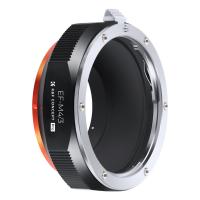



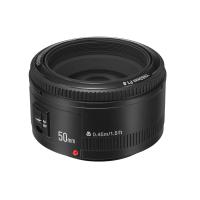




















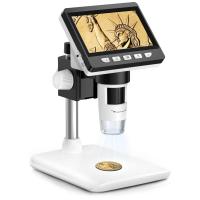








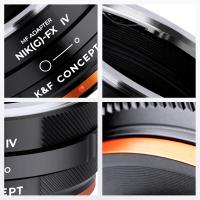
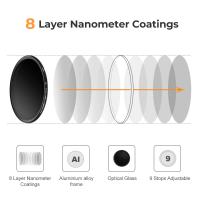


There are no comments for this blog.